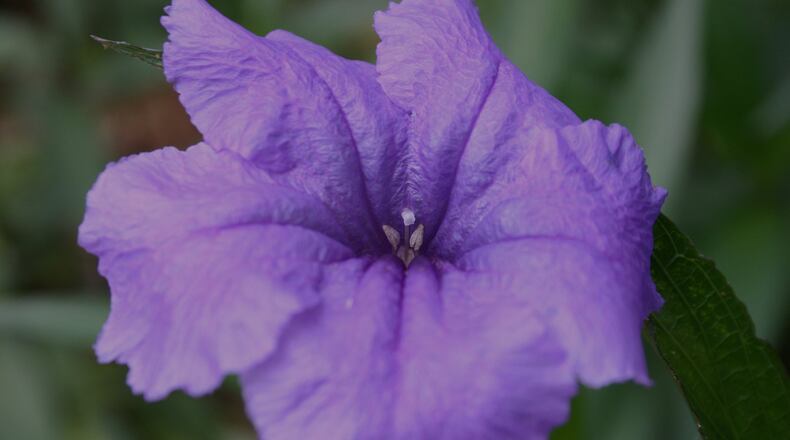Q: I see clumps of tall blue flowers called Mexican petunia in my neighborhood. Everyone tells me that they are very invasive and spread rapidly. Are they really that invasive? Frank Hosey, Gainesville
A: Tall Mexican petunia, Ruellia brittoniana, isn't invasive like bamboo or kudzu but it can be pretty "exuberant" when growing in a flower bed with other plants. In contrast, there are several varieties of ruellia claimed to be non-invasive: 'Katie', 'Chi Chi', 'Bonita', 'Purple Showers', and the "Mayan" series of plants. All yield the nonstop flowering of the tall form but are much less aggressive to neighbors.
Q: Do you have any suggestions for getting rid of the green jelly stuff in our lawn? Vonita W., email
A: You have nostoc. It's a gelatinous colony of a type of bacteria that is usually found where grass is growing poorly due to severe compaction, overwatering, or both. It doesn't kill grass; it has simply colonized an area where it has favorable conditions to grow. When things dry out, nostoc dries to a black crust on the soil. To discourage it permanently, improve soil drainage. You can get temporary control on a lawn with products that contain potassium salts or fatty acids (Moss and Algae Killer). Be sure to follow label directions exactly.
Q: My neighbor accuses my English ivy of being a harbor for snakes. Valid? Rod Freeman, email
A: Jason Clark, snake expert at Southeastern Reptile Rescue (SnakesAreUs.com) says ivy doesn't necessarily bring snakes to your property but when they do wander through and find ivy, juniper, monkey grass and other low-growing vegetation, it makes for an easy hiding place. Keep your ivy cut low in summer and mow the lawn nearby. Snakes hate being exposed and will not likely stick around for long.
Q: When should I trim my oakleaf hydrangea? How far back? Gladys Haley, email
A: The best time to prune is right after the flowers fade, usually in late July. Remembering that the shrub naturally wants to grow to at least 6 feet high, prune back to a height that gives it room to grow up next year. Make your pruning cuts just above the spot where leaves and buds emerge from a stem
Q: We pulled up the wooden tomato stakes from our raised beds and found them covered with termites. What would you do? Peggy Murphy, email
A: Finding termites on untreated wooden stakes is not a problem. This is the way nature is supposed to work: Logs, limbs and tree roots are gradually decomposed by fungi or insects as time passes. As long as you have a current termite-protection system for your home or other valuable buildings, termites in your landscape can go about their business without controls.
About the Author
The Latest
Featured

